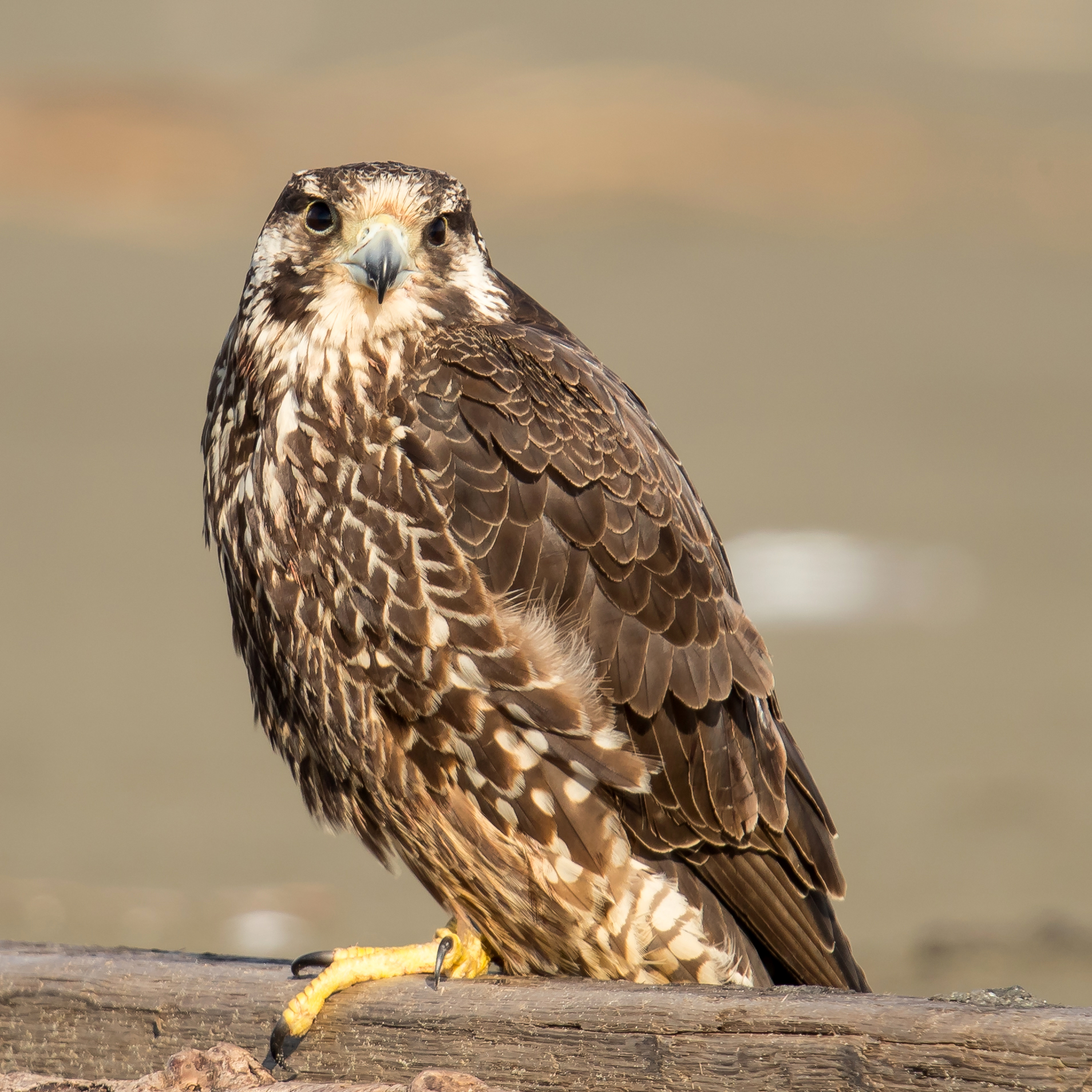Bird of the Month: Peregrine Falcon
By Andy McCormick
PC: Mick Thompson (Peregrine Falcon)
Scientific Name: Falco peregrines
Length 14-18" long
Wingspan 37-46"
Weight 1-2 lbs.
AOU Band code PEFA
The genus name falco is Latin for falcon, from the Latin falx, an agricultural tool with a curved blade, such as a scythe or sickle, which refers to the long toes with sharply curved talons. The species name is from peregrinus also from the Latin for foreign or exotic. It refers to the wandering nature of this bird (Holloway, 2003). Indeed, these birds with straight, pointed wings are compact, muscular and very fast flyers. They can cover great distances very quickly, and have been clocked at speeds in excess of 200 mph when in a steep dive called a stoop. They hunt other birds while they are in the air. They attack first with one foot stunning the bird and then have the option of grabbing on with the other foot. They will typically sever the bird’s spinal cord at the neck with their beak on a perch or on the ground. They are a spectacular bird both in flight and on the perch. They are a worldwide species and are seen year-round along Puget Sound and on the Olympic Peninsula and during migration in Eastern Washington.
The black “mustache” on the malar feathers just behind the bill is diagnostic for identifying a Peregrine at close range. The smooth slate-gray back can make identification from a rear view a bit difficult as we learned on a recent trip. From a long distance many mistook the Peregrine for a Merlin, which also has a dark back in the western U. S. Merlins can reach 12 inches in height, and a smaller male Peregrine at around 14 inches can create some confusion. The throats of adult Peregrines are white with many having white breasts as well and there is clear barring across the belly all the way to the under tail area. Peregrines for centuries have nested on cliffs in caves or small holes. Sometimes they “borrow” a nest. They incubate 2-5 burnt red and brown speckled, cream-colored, ovate eggs about the size of a hen’s egg in a shallow nest of gravel or sticks. Pete Dunne (1995) describes Peregrine eggs as “having the luster of polished stone.” The eggs were highly sought by collectors. The parents mate for life and divide the labor with the male hunting and the female tending the nest. The chicks hatch in 30-34 days.
Aggressive conservation efforts since the 1970s saved these remarkable birds from probable extinction. Pesticide poisoning and nest failure due to egg-thinning caused by DDT led to a steep decline in population. They have adapted well to city living and are now found nesting on bridges and tall buildings. With a ready supply of pigeons for food, the Peregrine Falcon may well be an exciting addition to the urban birding scene for years into the future.


